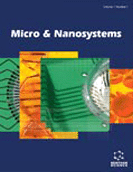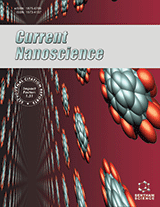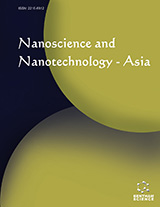Abstract
Spark assisted chemical engraving (SACE) technology has the potential for micro machining glass with advantages of simplicity, high aspect ratio and less micro cracks. Typical micro SACE process utilizes cylindrical tool and suffers from poor electrolyte circulation along with machining depth. This work employed Φ200µm tungsten carbide drill to experimentally fabricate micro holes on Pyrex Glass by applying SACE process. On the rotation of the drill, the micro grooves of the drill are capable of enhancing electrolyte circulation within machining zone and thus improve the processing performance. Several effects of process factors on drilling results were evaluated correspondently. The results revealed that machining time, drill rotation direction and rate, and the contact force affected the processing performance markedly. A deep hole of 245 ¿m in entrance diameter and 8.8 in aspect ratio was obtained by optimal process parameters. Tool wear has also been discussed herein.
Keywords: Electrochemical discharge phenomenon, micro drilling, micro machining, non-conductive material, pyrex glass, spark assisted chemical engraving.
Micro and Nanosystems
Title:Study of Micro Drilling on Pyrex Glass Using Spark Assisted Chemical Engraving
Volume: 6 Issue: 1
Author(s): Changshui Gao, Zhuang Liu and Angzi Li
Affiliation:
Keywords: Electrochemical discharge phenomenon, micro drilling, micro machining, non-conductive material, pyrex glass, spark assisted chemical engraving.
Abstract: Spark assisted chemical engraving (SACE) technology has the potential for micro machining glass with advantages of simplicity, high aspect ratio and less micro cracks. Typical micro SACE process utilizes cylindrical tool and suffers from poor electrolyte circulation along with machining depth. This work employed Φ200µm tungsten carbide drill to experimentally fabricate micro holes on Pyrex Glass by applying SACE process. On the rotation of the drill, the micro grooves of the drill are capable of enhancing electrolyte circulation within machining zone and thus improve the processing performance. Several effects of process factors on drilling results were evaluated correspondently. The results revealed that machining time, drill rotation direction and rate, and the contact force affected the processing performance markedly. A deep hole of 245 ¿m in entrance diameter and 8.8 in aspect ratio was obtained by optimal process parameters. Tool wear has also been discussed herein.
Export Options
About this article
Cite this article as:
Gao Changshui, Liu Zhuang and Li Angzi, Study of Micro Drilling on Pyrex Glass Using Spark Assisted Chemical Engraving, Micro and Nanosystems 2014; 6 (1) . https://dx.doi.org/10.2174/1876402905666131112201358
| DOI https://dx.doi.org/10.2174/1876402905666131112201358 |
Print ISSN 1876-4029 |
| Publisher Name Bentham Science Publisher |
Online ISSN 1876-4037 |
 27
27
- Author Guidelines
- Bentham Author Support Services (BASS)
- Graphical Abstracts
- Fabricating and Stating False Information
- Research Misconduct
- Post Publication Discussions and Corrections
- Publishing Ethics and Rectitude
- Increase Visibility of Your Article
- Archiving Policies
- Peer Review Workflow
- Order Your Article Before Print
- Promote Your Article
- Manuscript Transfer Facility
- Editorial Policies
- Allegations from Whistleblowers






















